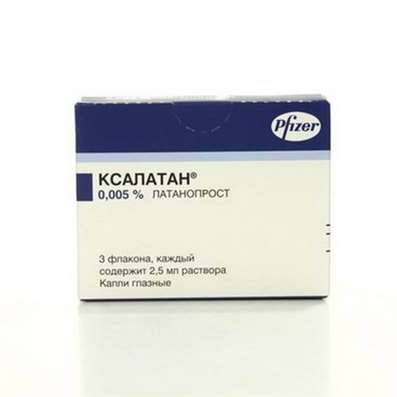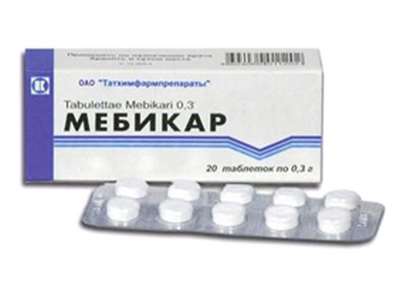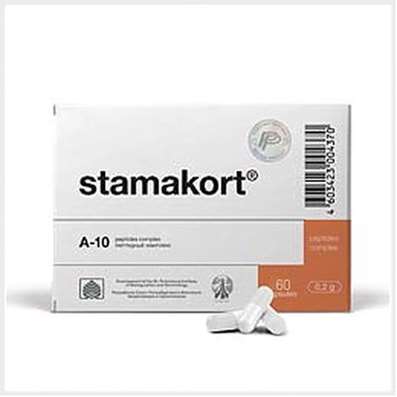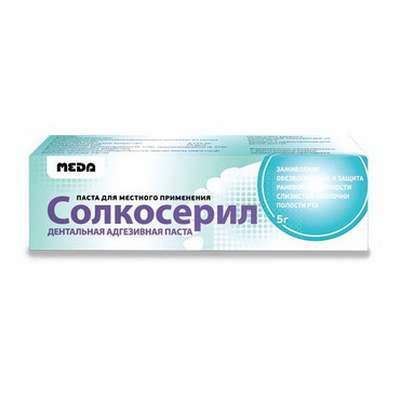Instruction for use: Flamax
I want this, give me price
Active substance Ketoprofen
ATX code M01AE03 Ketoprofen
Pharmacological group
Non-steroidal anti-inflammatory drug (NSAID) [NSAIDs - Propionic acid derivatives]
Nosological classification (ICD-10)
C80 Malignant neoplasm without specification of localization
Malignant tumor, Malignant neoplasm, Malignant neoplasms of different localization, Malignant tumors, Eton-Lambert syndrome, Locally prevalent forms of malignant neoplasms, Metastatic ascites, Cerebellar degeneration in tumors, Hereditary cancers, Metastatic tumors, Cancer ascites, Solid tumors
G43 Migraine
The pain of migraine, Migraine, hemiplegic migraine, Migraine headache, A migraine attack, Continuous headache, hemicranias
G54 Lesions of nerve roots and plexuses
Radicular syndrome with osteochondrosis, Neuralgia of radicular origin, Plexitis, Plexitis, Radiculitis with radicular syndrome, Syndrome of radicular
K08.8.0 * Painful toothache
Dentinal pain, Dentinal pains, Pain pulpitis, Anesthesia in dentistry, Pain syndromes in dental practice, Pain after removal of tartar, Pain when extracting a tooth, Toothache, Pain after dental interventions
M06.4 Inflammatory polyarthropathy
Inflammatory-degenerative diseases of the musculoskeletal system
M06.9 Other specified rheumatoid arthritis
Rheumatoid arthritis,Pain syndrome in rheumatic diseases, Pain in rheumatoid arthritis, Inflammation in rheumatoid arthritis, Degenerative forms of rheumatoid arthritis, Children's rheumatoid arthritis, Exacerbation of rheumatoid arthritis, Acute articular rheumatism, Rheumatic arthritis, Rheumatic polyarthritis, Rheumatoid arthritis, Rheumatic polyarthritis, Rheumatoid arthritis, Rheumatoid arthritis of active course, Rheumatoid arthritis, Rheumatoid polyarthritis, Acute rheumatoid arthritis, Acute rheumatism
M07.3 Other psoriatic arthropathies (L40.5 +)
Arthritis psoriatic, The generalized form of psoriatic arthritis, Psoriatic arthritis
M08 Juvenile [juvenile] Arthritis
Juvenile arthritis, Juvenile chronic polyarthritis, Juvenile chronic arthritis, Juvenile rheumatoid arthritis, Arthritis juvenile chronic
M10.9 Gout, unspecified
Arthritis Gouty, Acute gouty arthritis, Acute attack of gout, Gouty Arthritis, Articular syndrome with exacerbation of gout, Articular syndrome with gout, Urarturia, Chronic arthritic arthritis, Acute gout, Salt diathesis
M19 Other arthrosis
M19.9 Arthrosis, unspecified
Change in brush with osteoarthritis, Osteoarthritis, Osteoarthrosis, Arthrosis of large joints, Pain syndrome in osteoarthritis, Pain syndrome in acute inflammatory diseases of the musculoskeletal system, Pain syndrome in chronic inflammatory diseases of the musculoskeletal system, Deforming arthrosis, Deforming osteoarthritis, Deforming osteoarthritis of joints, Osteoarthritis in the acute stage, Osteoarthritis of large joints, Acute pain syndrome with osteoarthritis, Post-traumatic osteoarthritis, Rheumatic osteoarthritis, Spondylarthrosis, Chronic osteoarthritis
M35.3 Rheumatic polymyalgia
Pseudoarthritis rhizomelic, Rheumatic polymyalgia, Pain syndrome in rheumatic diseases, Muscle pain with rheumatism, Extra-articular rheumatism, Extra-articular rheumatic syndrome, Extra-articular rheumatic diseases, Extra-articular rheumatic soft tissue injury, Extra-articular forms of rheumatism, Rheumatic soft tissue damage, Rheumatism of soft tissues, Rheumatic diseases of soft tissues, Rheumatic diseases of the periarticular soft tissues, Rheumatic affections of soft tissues, Rheumatic collagen diseases
M45 Ankylosing spondylitis
Ankylosing spondylarthrosis, Marie-Strumpel disease, Ankylosing spondylitis, Pain syndrome in acute inflammatory diseases of the musculoskeletal system, Pain syndrome in chronic inflammatory diseases of the musculoskeletal system, Bechterew's disease, Ankylosing spondylitis, Diseases of the spinal column, Rheumatic spondylitis, Bechterew-Marie-Strumpel disease
M54.3 Sciatica
Ishialgia, Neuralgia of the sciatic nerve, Sciatic neuritis
M54.4 Lumbago with sciatica
Pain in the lumbosacral spine, Lumbago, Sciatica, Lumbar syndrome
M54.9 Dorsalgia, unspecified
Pain syndrome with radiculitis, Pain syndrome in the back,Pain with radiculitis, Degenerative changes in the spine, Degenerative and dystrophic disease of the spine and joints, Degenerative disease of the spine, Osteoarthrosis of the spine, Painful lesions of the spine
N70 Salpingitis and oophoritis
Adnexitis, Inflammatory diseases of female genitalia, Inflammatory diseases of female genital organs, Infection of the genitals, Oophoritis, Acute adnexitis, Salpingitis, Salpingo-oophoritis, Chronic inflammatory diseases of the ovaries, Inflammation of the ovaries
N94.6 Dysmenorrhea Unspecified
Pain during menstruation, Functional disorders of the menstrual cycle, Menstrual cramps, Emmeniopathy, Pain during menstruation, Painful menstrual irregularities, algomenorrhea, algomenoreya, Pain smooth muscle spasm, Pain spasm of smooth muscles (renal and biliary colic, intestinal spasms, dysmenorrhea), Pain spasm of smooth muscles of internal organs (kidney and biliary colic, intestinal spasms, dysmenorrhea), Disalgomenoreya, dysmenorrhea, Dysmenorrhea (essential) (Exfoliative), menstrual disorder, menstruation painful, metrorrhagia, Violation of the menstrual cycle, Menstrual irregularities, Prolaktinzavisimoe menstrual disorders, Prolaktinzavisimoe menstrual dysfunction, Pain spasm of smooth muscles of internal organs, Spasmodic dysmenorrhea, Primary disalgomenoreya
R52.0 Acute pain
Acute pain syndrome, Acute pain syndrome with osteoarthritis, Acute pain syndrome of traumatic origin, Severe pain of a neurogenic nature, Severe pain, Pain syndrome at delivery
R52.1 Constant unrestrained pain
Pain syndrome in oncology practice, Pain syndrome pronounced, Pain syndrome in malignant neoplasms, Pain syndrome in cancer, Pain syndrome with tumors, Pain syndrome in cancer patients, Pain in malignant neoplasms, Pain in malignant tumors, Pain in tumors, Pain in cancer patients, Pain in bone metastases, Pain in cancer, Malignant pain syndrome, Intensive chronic pain, Intensive pain syndrome, Intensive non-curable pain syndrome, Intensive chronic pain syndrome, Unrestrained pain, Unrestrained pain, Tumor pain, Post-traumatic pain syndrome, Severe pain, Chronic pain, Chronic Pain Syndrome
R52.9 Unspecified Pain
Pain after cholecystectomy, Pain shooting, Non-malignant pain, Obstetric and gynecological pain, Pain syndrome, Pain in the postoperative period, Pain in the postoperative period after orthopedic surgery, Pain of inflammatory genesis, Pain than cancer genesis, Pain syndrome after diagnostic procedures, Pain after surgery Diagnostic, Pain after surgery, Pain after orthopedic surgery, Pain after injuries, Pain after the removal of hemorrhoids, Pain at the non-rheumatic inflammation of nature, Pain in inflammatory lesions of the peripheral nervous system, Pain in diabetic neuropathy, Pain in acute inflammatory diseases of the musculoskeletal system, Pain when the tendon pathology, Pain smooth muscle spasm, Pain spasm of smooth muscles (renal and biliary colic, intestinal spasms, dysmenorrhea), Pain spasm of smooth muscles of internal organs, Pain spasm of smooth muscles of internal organs (kidney and biliary colic, intestinal spasms, dysmenorrhea), Pain in trauma syndrome, Pain with injuries and after surgical interventions, Pain in chronic inflammatory diseases of the musculoskeletal system, Pain with duodenal ulcer, Pain syndrome in gastric ulcer, Pain syndrome in gastric ulcer and duodenal ulcer, pain, Pain during menstruation, pain syndromes, painful condition, Painful foot fatigue, Sore gums when wearing dentures, Soreness of the cranial nerves exit points, Painful menstrual irregularities, Painful dressings, Painful muscle spasm, Painful teeth growth, Melosalgia, Pain in the area of the surgical wound, Pain in the postoperative period, Pain in the body, Pain after diagnostic procedures, Pain after orthopedic surgery, Pain after surgery, The pains of the flu, Pain in diabetic polyneuropathy, Pain for burns, Pain during sexual intercourse, Pain during diagnostic procedures, Pain during therapeutic procedures, for colds Pain, Pain in sinusitis, Pain in trauma, Pain traumatic, The pain in the postoperative period, Pain after diagnostic procedures, The pain after sclerotherapy, Pain after surgery, postoperative Pain, Pain postoperative and posttraumatic, posttraumatic pain, Pain when swallowing, Pain in infectious and inflammatory diseases of the upper respiratory tract, The pain of burns, The pain in traumatic muscle injury, Pain in trauma, The pain of tooth extraction, The pain of traumatic origin, Pain caused by spasm of smooth muscles, Expressed pain syndrome, Expressed pain syndrome, traumatic origin, Postoperative pain, Post-traumatic pain, Post-traumatic pain syndrome, Torpid pain, Traumatic pain, Traumatic pain, Mild pain, Moderately severe pain, Moderate pain, Polyarthralgia with polymyositis
R68.8.0 * Inflammatory syndrome
Painful syndrome of inflammatory genesis, Pain syndrome with inflammation of non-rheumatic nature, Pain syndrome with inflammatory lesions of the peripheral nervous system, Painful inflammation of the shoulder joint, Painful inflammation after trauma or surgery, Painful inflammation after surgery, Painful hemorrhoids, Inflammation of the tympanic membrane, Inflammation of the larynx, Inflammation of the gums, Inflammation of cellulose, Inflammation of lymph nodes, Tonsillitis, Inflammation of muscles, Inflammation of soft tissues, Inflammation of the mouth, Inflammation after surgery and trauma, Inflammation after orthopedic surgery, Inflammation after trauma, Inflammation in rheumatoid arthritis, Inflammation of the middle ear, Inflammatory gum disease, Inflammatory diseases of the eyelids, Inflammatory eye diseases, Inflammatory swelling of soft tissues, Inflammatory processes, Inflammatory processes after surgical interventions, Inflammatory process, Inflammatory Syndrome, Inflammatory syndrome of non-rheumatic origin, Inflammatory syndrome after surgery, Purulent infections, Infringements of function of a liver of an inflammatory etiology, Acute inflammation of the musculoskeletal tissue, Pre-inflammatory soft tissue inflammation
T14.9 Injury unspecified
Pain syndrome after trauma, Pain syndrome with injuries, Pain syndrome with trauma and after surgery, Pain in case of injury, Pain of a traumatic nature, Joint pain with injuries, Postoperative and post-traumatic pain, Pain in case of injury, Pain of a traumatic origin, Severe pain syndrome of traumatic origin, Deep tissue damage, Deep scratches on the trunk, Closed injury, Minor Household Injuries, Minor skin damage, Violations of the integrity of soft tissues, Uncomplicated trauma, Extensive traumatic injury, Acute pain syndrome of traumatic origin, Edema with trauma, Postponed sports injuries, Post-traumatic pain, Soft tissue injuries, Joint wounds, Sports injuries, Injury, Traumatic pain, Traumatic pains, Traumatic infiltrate,Injuries to sports
T88.9 Complication of surgical and medical care, unspecified
Pain in the postoperative period, Pain in the postoperative period after orthopedic surgery, Pain syndrome after diagnostic procedures, Pain after surgery Diagnostic, Pain after surgery, Pain after orthopedic surgery, Pain after the removal of hemorrhoids, Pain in the application of excimer laser, Pain with injuries and after surgical interventions, Pain syndromes in the dental practice, Painful diagnostic intervention, Painful diagnostic manipulations, Painful instrumental diagnostic procedures, Painful instrumental manipulation, Painful treatments, Painful manipulations, Painful dressings, Painful therapeutic interventions, Pain in the area of the surgical wound, Pain in the postoperative period, Pain after diagnostic procedures, Pain after orthopedic surgery, Pain during diagnostic procedures, Pain during therapeutic procedures, Pain in orthopedics, The pain in the postoperative period, Pain after diagnostic procedures, The pain after sclerotherapy, The pain after dental surgery, postoperative Pain, Pain postoperative and posttraumatic, The pain of tooth extraction, Inflammation after surgery or injury, Inflammation after orthopedic surgery, Inflammation after surgery, The inflammatory syndrome after surgery, Festering postoperative fistula, Operating wound, Complications after tooth extraction
Composition
Solution for intravenous and intramuscular injection 1 amp. (2 ml)
active substance:
ketoprofen 100 mg
auxiliary substances: propylene glycol 800 mg; Ethanol (ethyl alcohol 95% in terms of 100% substance) - 200 mg; benzyl alcohol - 40 mg; sodium hydroxide 1M solution - to pH 6.5-7.5; water for injection - up to 2 ml
Description of dosage form
Solution: colorless or with a yellowish tint, transparent.
pharmachologic effect
Pharmacological action - anti-inflammatory, antipyretic, antiaggregational, analgesic.
Pharmacodynamics
NSAIDs (non-steroidal anti-inflammatory drugs), a derivative of propionic acid. It has analgesic, anti-inflammatory and antipyretic effects, suppresses platelet aggregation. By acting on the cyclooxygenase unit of the metabolism of arachidonic acid, ketoprofen inhibits the synthesis of PG and Tx. The analgesic effect is due to both central and peripheral mechanisms.
Pharmacokinetics
Distribution
Up to 99% of ketoprofen binds to plasma proteins, mainly with albumin. Cmax in plasma is achieved quickly due to low Vd (0.1-0.2 l / kg). Css ketoprofen is achieved 24 hours after the start of its regular intake. Ketoprofen penetrates well into the synovial fluid and connective tissues. Significant concentration in the synovial fluid is achieved only 15 minutes after a single IM injection of 100 mg of ketoprofen. Although the concentration of ketoprofen in the synovial fluid is somewhat lower than in the plasma, they are more stable (lasting up to 30 hours), resulting in a long-term reduction in pain and joint stiffness. In a significant amount does not penetrate the BBB (blood-brain barrier).
Metabolism
Ketoprofen is mainly metabolized in the liver, where it undergoes glucuronidation to form esters with glucuronic acid, mainly excreted by the kidneys. Has the effect of first passing through the liver.
Excretion
It is excreted mainly by the kidneys. Excretion with caloric masses is less than 1%. T1 / 2 ketoprofen ranges from 1.6 to 1.9 hours. Does not cumulate.
Indications
Symptomatic treatment of pain and inflammation of various genesis of moderate intensity:
inflammatory and degenerative diseases of the musculoskeletal system - rheumatoid, psoriatic, juvenile chronic arthritis, ankylosing spondylitis (Bechterew's disease), gouty arthritis, rheumatic soft tissue damage, osteoarthrosis of the peripheral joints and spine (including with radicular syndrome);
lumbago, sciatica, neuralgia;
migraine;
algodismenorea, inflammatory processes of the pelvic organs, incl. adnexitis;
post-traumatic pain syndrome, accompanied by inflammation;
postoperative pain;
toothache;
pain syndrome in cancer.
On the progression of the disease is not affected.
Contraindications
hypersensitivity (including other NSAIDs or ancillary components);
erosive and ulcerative lesions of the gastrointestinal tract in the phase of exacerbation;
bleeding from the digestive tract;
inflammatory bowel disease in the phase of exacerbation (ulcerative colitis, Crohn's disease);
severe hepatic insufficiency or liver disease in an acute period;
severe renal failure (Cl creatinine less than 30 mL / min);
progressive kidney disease;
hyperkalemia;
complete or incomplete combination of bronchial asthma, recurrent nasal polyposis and paranasal sinuses and intolerance to acetylsalicylic acid or other NSAIDs (including in anamnesis);
violation of hematopoiesis, hemostasis disorders (including hemophilia);
period after aortocoronary shunting;
pregnancy (III trimester);
lactation period;
age up to 15 years.
With caution: bronchial asthma; presence of factors that increase toxicity in relation to the gastrointestinal tract - alcoholism and cholecystitis, chronic heart failure, edematous syndrome; arterial hypertension, impaired renal function, cholestasis, sepsis, concurrent use with other NSAIDs, advanced age (over 65 years), pregnancy (I-II trimester); cardiac ischemia; cerebrovascular diseases; dyslipidemia / hyperlipidemia; diabetes; diseases of peripheral arteries; smoking; chronic renal failure (Cl creatinine 30-60 ml / min); anamnestic data on the development of gastrointestinal ulcer; confirmed presence of Helicobacter pylori infection; long-term use of NSAIDs; severe physical illness; concomitant therapy with the following drugs - anticoagulants (including warfarin), antiaggregants (including acetylsalicylic acid, clopidogrel), SSRIs (including citalopram, fluoxetine, paroxetine, sertraline), GCS (including prednisolone). To reduce the risk of developing adverse events on the part of the gastrointestinal tract, a minimum effective dose should be used with the minimum possible short course.
pregnancy and lactation
The use of Flamax® in the third trimester of pregnancy and with breastfeeding is contraindicated (should be abandoned from feeding for the period of application of the drug). Application in the I and II trimesters of pregnancy is allowed if the potential benefit to the mother exceeds the potential risk to the fetus.
Side effects
On the part of the digestive system: abdominal pain, dyspepsia (nausea, vomiting, heartburn, flatulence, decreased appetite, diarrhea), stomatitis, impaired liver function, taste change. With prolonged use in large doses - ulceration of the mucous membrane of the gastrointestinal tract, gingival, gastrointestinal, hemorrhoidal bleeding.
On the part of the nervous system: headache, dizziness, insomnia, agitation, nervousness, drowsiness, depression, asthenia, confusion or loss of consciousness, memory impairment, migraine, peripheral neuropathy.
From the senses: noise or ringing in the ears, blurred vision, conjunctivitis, dry eye, eye pain, conjunctival hyperemia, hearing loss, vertigo.
From the CCC (cardiovascular system): increased blood pressure (arterial pressure), tachycardia.
On the part of the organs of hematopoiesis: agranulocytosis, anemia, hemolytic anemia, thrombocytopenia, leukopenia.
From the urinary system: edematous syndrome, cystitis, urethritis, renal dysfunction, interstitial nephritis, nephrotic syndrome, hematuria.
Allergic reactions: skin rash (including erythematous, urticaria), skin itching, rhinitis, angioedema, bronchospasm, exfoliative dermatitis, anaphylactic shock.
Other: increased sweating, hemoptysis, epistaxis, myalgia, muscle twitching, shortness of breath, thirst, photosensitivity; with prolonged use in large doses - vaginal bleeding.
If the patient develops any of the side effects indicated in the instructions, you should consult your doctor as soon as possible. If any of the side effects listed in the manual are aggravated or the patient has noticed any other side effects not listed in the instructions, you should inform your doctor.
Interaction
With the simultaneous administration of Flamax® and loop diuretics, the nephrotoxic effect of both drugs is enhanced. Reduces the effectiveness of uricosuric drugs, enhances the effect of anticoagulants, antiaggregants, fibrinolytics, ethanol, side effects of SCS and mineralocorticosteroids, estrogens; reduces the effectiveness of antihypertensive drugs and diuretics.
Simultaneous use with other NSAIDs, GCS, ethanol, corticotropin can lead to the formation of ulcers and the development of gastrointestinal bleeding, an increased risk of kidney dysfunction.
Simultaneous use with oral anticoagulants, heparin, thrombolytic agents, antiaggregants, cefoperazone, cefamandole and cefotetan increases the risk of bleeding.
Increases hypoglycemic effect of insulin and oral hypoglycemic drugs (dose recalculation is necessary).
Inducers of microsomal oxidation in the liver (phenytoin, ethanol, barbiturates, rifampicin, phenylbutazone, tricyclic antidepressants) increase the production of hydroxylated active metabolites.
Joint use with sodium valproate reduces the aggregation of platelets.
Increases the concentration in the plasma of verapamil and nifedipine, lithium preparations, methotrexate.
Antacids and colestyramine reduce absorption.
Increases the hematotoxicity of myelotoxic drugs.
To prevent the formation of sediment, Flamax® and tramadol should not be mixed in a single vial.
If the patient is taking other drugs, he should consult a doctor.
Dosing and Administration
In / in (intravenously), in / m (intramuscularly).
Intramuscular injection (intramuscular): 100 mg (1 amp) 1-2 times a day.
In / in (intravenously) infusion administration of the drug should be carried out only in a hospital. The average infusion time is 0.5-1 h, maximum - no more than 48 h, with the dose of the drug should not exceed 300 mg.
A short-term intravenous infusion: 100-200 mg (1-2 amp) of the drug diluted in 100 ml of 0.9% sodium chloride solution, is injected for 0.5-1 hour. Possible repeated administration after 8 hours.
Continuous intravenous infusion: 100-200 mg (1-2 amp) of the drug diluted in 500 ml of solution for infusions (0.9% solution of sodium chloride, lactate-containing Ringer's solution, 5% dextrose solution), administered within 8 hours .
Possible repeated administration after 8 hours.
Combined application
Flamax® can be combined with analgesics of central action; it can be mixed with morphine in one bottle. Do not mix in one bottle with tramadol due to precipitation. Parenteral administration of Flamax® can be combined with the use of oral forms (tablets, capsules) or rectal suppositories, with the total daily dose to be increased to 300 mg or reduced to 100 mg, depending on the nature of the disease and the patient's condition.
A minimum effective dose should be used with the minimum possible short course (see "Special instructions").
Overdose
Cases of overdose are not described.
Symptoms: There may be dizziness, vomiting, headache, shortness of breath, abdominal pain, bleeding, liver and kidney function.
Treatment: symptomatic.
special instructions
When using Flamax® and warfarin or lithium drugs simultaneously, patients should be under strict medical supervision.
Care should be taken when prescribing the drug to patients with peptic ulcer diseases in history, renal or hepatic insufficiency, and also receiving coumarin anticoagulants.
Like the rest of the drugs in this group, it can mask the symptoms of infectious diseases.
During treatment, it is necessary to monitor the picture of peripheral blood and the functional state of the liver and kidneys.
If it is necessary to determine 17-ketosteroids, the drug should be discontinued 48 hours before the test.
If there is a violation of the liver, kidneys need to reduce the dose and careful observation.
To reduce the risk of developing adverse events from the gastrointestinal tract, the minimum effective dose should be used as little as possible with a short course (see "Method of administration and dose").
Influence on the ability to drive vehicles and work with machinery. During the treatment period, care must be taken when driving vehicles and engaging in other potentially hazardous activities that require increased concentration and speed of psychomotor reactions.
Form of issue
Solution for intravenous and intramuscular injection, 50 mg / ml. In ampoules of type I light-protection glass with a color fracture ring or with a colored dot and a notch of 2 ml. The ampoules additionally bear 1, 2 or 3 color rings and / or a two-dimensional barcode, and / or alphanumeric coding, or without additional color rings, a two-dimensional barcode, alphanumeric coding. 5 amp. in the outline cell pack. 1 or 2 contour squares in a pack of cardboard.
Conditions of leave from pharmacies
On prescription.
Storage conditions
At a temperature of no higher than 25 ° C.
Keep out of the reach of children.
Shelf life
5 years.
Do not use after the expiry date printed on the package.

 Cart
Cart





